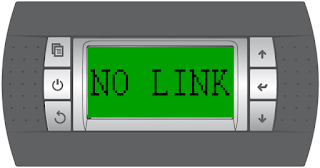Cold Rooms for food storage
Food storage uses various
procedures that vary based on duration:
- Refrigeration, if the food must be stored for a short period of time (0…7 °C).
- Freezing, deep freezing and lyophilisation (freeze drying) if it must be stored for long periods.
When deep freezing the product it
must reach a temperature of -18 °C in less than 4 hours while for
regular freezing the product can take more than 4 hours to reach -18 °C.
During lyophilisation the product is dried following a forced evaporation of
the water component of the product.
In the food industry, refrigeration is one of the most delicate and
complex applications because food requires treatment at different temperatures
depending upon the processing phase.
Refrigeration slows the growth of bacteria on food. The technique is
based on the extremely quick and intense action performed by the cold
temperature that allows the organoleptic qualities of the food to be kept
intact, prolonging storage time.
Systems designed and installed on an industrial scale as well as those
for large consumption are based on standard procedures and techniques. The
chiller system is only one part of a more complex system that allows the
evaporator to define the ideal heat exchanger and thus maintain the food.
Cold rooms are a key point in the cold chain.
Proper management has positive impact on both the quality of the
stored product and on the environment in terms of energy savings.
Often the contents of a cold room is of great monetary value and
therefore requires serious and reliable technological solutions.
Depending upon the type of food or system, the cold rooms can be
classified as:
- Normal temperature
(>0 °C,
for storing fruits and vegetables for example)
- Low temperature
(<0 °C,
for storing meat for example)
- Stand-along
(with on-board motocondensing unit)
- With
remote motocondensing unit or monoblock controlled
- Centralised
(without on-board compressor, with remote chiller control unit).
Typically, cold rooms with on-board motocondensing units or monoblock
are located in small sales locations while cold rooms with chillers contro lunits are found in supermarkets and distribution centres.
The main elements which must typically be managed by an electronic
controller are:
- Probes for
detecting the room temperature and for defrosting (if included)
- Compressor
- Defrosting
resistors
- Evaporation fans
- Lights
- Door switch
- Alarms
- Condensation fans
CAREL offers its customers various types of electrical panels based on
advanced controllers that are easy to use and extremely flexible.



Hi there! glad to drop by your page and found these very interesting and informative stuff. Thanks for sharing, keep it up!
ReplyDelete- Cold Storage MA
Thank's for your comment!
DeleteI havent any word to appreciate this post.....Really i am impressed from this post....the person who create this post it was a great human..thanks for shared this with us.
ReplyDeleteice cream machines